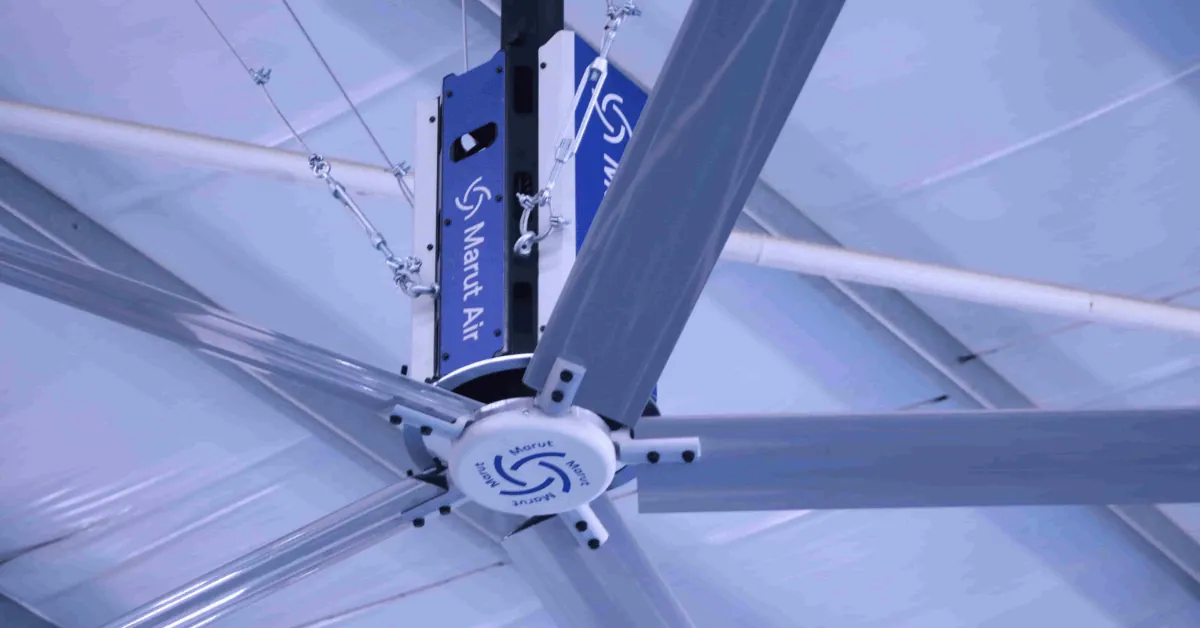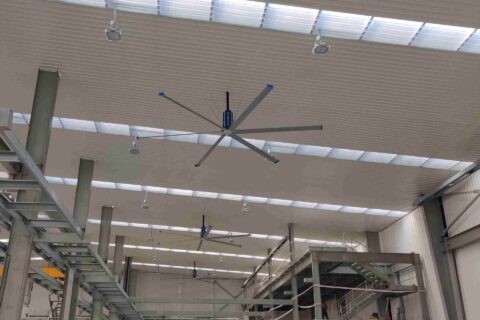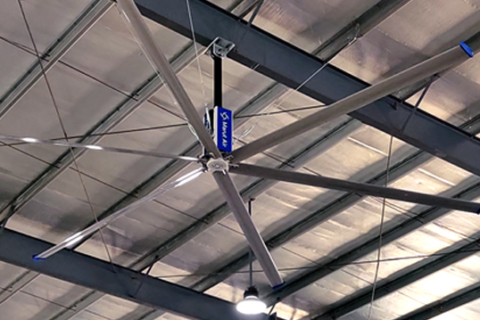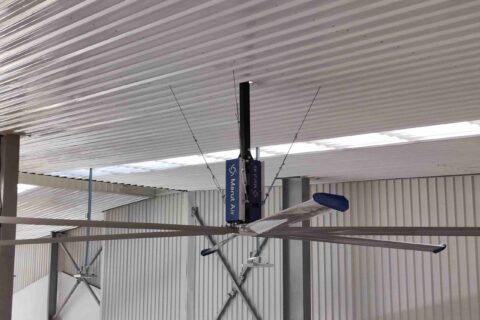
HVLS Fan is known as Helicopter fan. But did you have a question in your mind that why? Why are HVLS Fans also called Helicopter fans? In this blog, we will answer your question. & Make things clear about HVLS fans & Helicopter Fans.
Let first clear how a Helicopter fly? Helicopters use the same principles of aerodynamics and physics to achieve the necessary lift as fixed-wing aircraft.
Helicopter rotors rotate so fast that they are actually wing-like “discs.” This technology is basically the same as the principle of high volume low speed (HVLS) fans.
The difference between the helicopter and the HVLS fans is that the blades on the fan are made to push air through a building versus lift an aircraft off the ground.
What are HVLS Fans?
HVLS refers to High Volume Low Speed which is designed specifically to rotate a large amount of air at a slow speed. Unlike conventional ceiling fans that are small and rotate fast, HVLS fans are large ceiling fans with an 8- to 24-ft diameter.
Why are HVLS Fans Known as Helicopter Fans?
When comparing the HVLS blades to helicopter blades it is important to note two things: blade speed and purpose. Let’s Breakdown full form of HVLS Fans to better understand.
High Air Volume
Like a helicopter rotor blade, the HVLS fans blade moves a lot of air.
A large 24-foot diameter HVLS fan gently moves large volumes of air up to 22,000 square feet.
This is powerful enough to cool and control the air in large industrial premises such as airplane/helicopter hangars, automobile industry, or production or distribution facilities.
These fans move slowly and distribute large amounts of air at a low rotational speed.
Consistent Air at Low Speed
Unlike helicopter rotor blades, HVLS fans speed is set to low.
This is the main reason why HVLS fans are not creating excessive vibrations and shakes.
This allows the fan to push large quantities of air throughout large rooms or buildings with very little disturbance.
While the purpose of the blade action is for air temperature and environmental control, it works just like helicopter rotors.
To learn more about which ventilation system (fans, cooler) would work best for your premises, you can just drop your contact details, We’ll get back to you soon.
What are the Key Benefits of Helicopter Fans?
There are many advantages of using HVLS fans, some of the key advantages include the following:
- Energy Efficiency: One HVLS fan can replace several smaller fans and reduce energy consumption from 30% to 50%.
- Coverage area: HVLS fans, with a maximum of 24 feet, will provide coverage of up to 20,000 square feet of space with just one fan.
- Air Quality: HVLS fans increase air circulation, lower humidity and reduce odor, providing a healthy space and proper airflow for employees and the public.
- Comfort Cooling: Delivering airflow at an even, low level provides a natural breeze experience and up to 6 to 8°C of cooling without overcooling the whole space.
- Cost Savings: There will be a significant reduction in electricity costs and maintenance expenses for air conditioning systems and these ventilation solutions will allow businesses to rely less on air conditioning systems.
What are the Common Applications of HVLS Fans
HVLS or helicopter fans are not just limited to factories, they are widely used across different industries such as:
- Warehouses & Logistics Centers
- Manufacturing Units
- Airports & Hangars
- Agriculture
- Shopping Malls & Gyms
- Educational Institutions
People Also Ask About HVLS (Helicopter) Fans
Question 1. What does HVLS stand for?
Answer. HVLS stands for High Volume Low Speed and is also known as helicopter fans. These fans are made specifically for cooling large spaces and work by moving a large amount of air at a constant slow speed.
Question 2. Why are HVLS fans called helicopter fans?
Answer. HVLS fans are called helicopter fans because they have large blades that resemble a helicopter and move more air at a slow speed.
Question 3. How much area can one HVLS fan cover?
Answer. Depending on the size of an HVLS fan, it can cover up to 20,000 square feet efficiently and effectively.
Question 4. Where are HVLS fans commonly used?
Answer. HVLS fans are commonly used in large industrial and commercial spaces such as warehouses, factories, airports, gyms, malls and agricultural setups that require large-area cooling.





